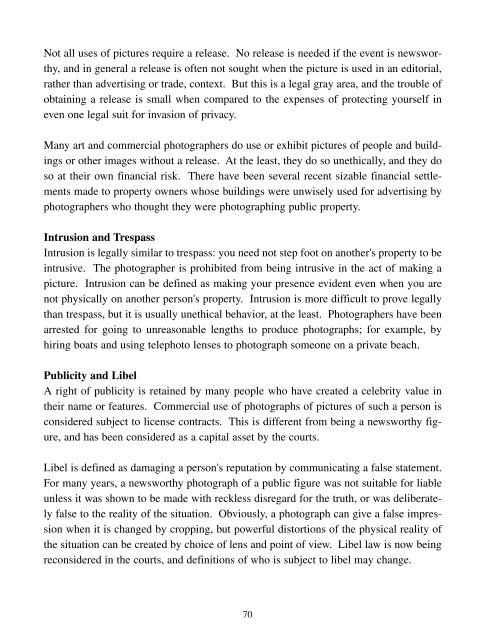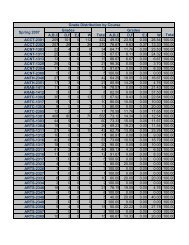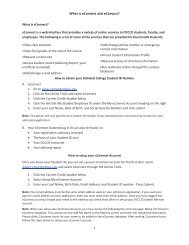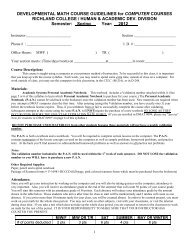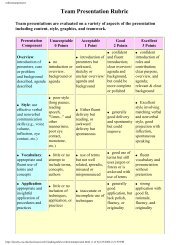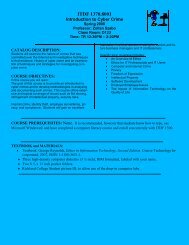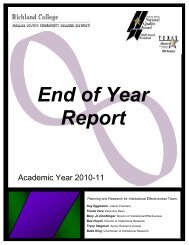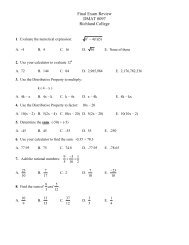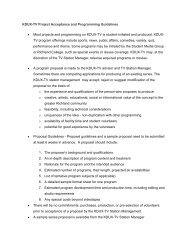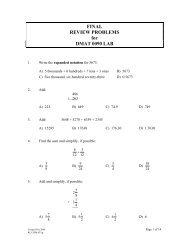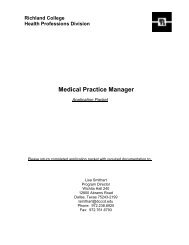Photo Lab Manual (PDF) - Richland College
Photo Lab Manual (PDF) - Richland College
Photo Lab Manual (PDF) - Richland College
You also want an ePaper? Increase the reach of your titles
YUMPU automatically turns print PDFs into web optimized ePapers that Google loves.
Not all uses of pictures require a release. No release is needed if the event is newsworthy,and in general a release is often not sought when the picture is used in an editorial,rather than advertising or trade, context. But this is a legal gray area, and the trouble ofobtaining a release is small when compared to the expenses of protecting yourself ineven one legal suit for invasion of privacy.Many art and commercial photographers do use or exhibit pictures of people and buildingsor other images without a release. At the least, they do so unethically, and they doso at their own financial risk. There have been several recent sizable financial settlementsmade to property owners whose buildings were unwisely used for advertising byphotographers who thought they were photographing public property.Intrusion and TrespassIntrusion is legally similar to trespass: you need not step foot on another's property to beintrusive. The photographer is prohibited from being intrusive in the act of making apicture. Intrusion can be defined as making your presence evident even when you arenot physically on another person's property. Intrusion is more difficult to prove legallythan trespass, but it is usually unethical behavior, at the least. <strong>Photo</strong>graphers have beenarrested for going to unreasonable lengths to produce photographs; for example, byhiring boats and using telephoto lenses to photograph someone on a private beach.Publicity and LibelA right of publicity is retained by many people who have created a celebrity value intheir name or features. Commercial use of photographs of pictures of such a person isconsidered subject to license contracts. This is different from being a newsworthy figure,and has been considered as a capital asset by the courts.Libel is defined as damaging a person's reputation by communicating a false statement.For many years, a newsworthy photograph of a public figure was not suitable for liableunless it was shown to be made with reckless disregard for the truth, or was deliberatelyfalse to the reality of the situation. Obviously, a photograph can give a false impressionwhen it is changed by cropping, but powerful distortions of the physical reality ofthe situation can be created by choice of lens and point of view. Libel law is now beingreconsidered in the courts, and definitions of who is subject to libel may change.70


